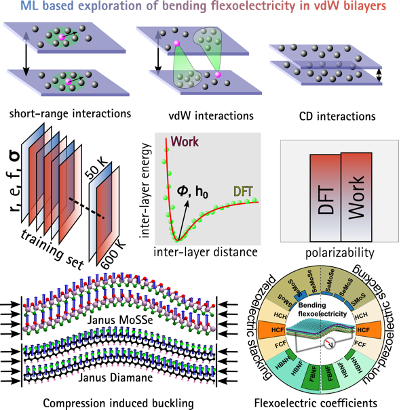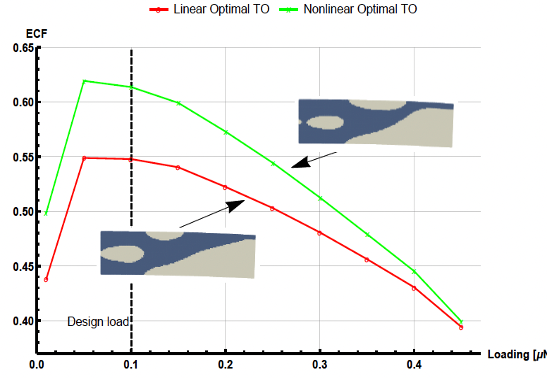


This topic is related to my ongoing ERC Starting Grant “COTOFLEXI” which focuses on the computational modelling, characterization and design of flexoelectic nano sturctures. In my group, the multiscale modelling framework is developed to bridge between different length scales for flexoelectric nanostructures. At the atomistic scale, I focused on the characterization of piezoelectricity and flexoelectricity of two-dimensional materials. We proposed an innovativeand efficient methodology to explore the flexoelectric response from 2D bilayers using MLIP with incorporated long-range interactions, which has been published in “Advanced Energy Materials” (12, 2201370, DOI: 10.1002/aenm.202201370). The flexoelectric responses due to the bending deformation under compression loading are examined. My previous works explained the mechanism and extracted the bending flexoelectric response and stretching piezoelectric response from a broader range of 2D monolayer materials. In this work, a novel concept of handling of short and long-range interactions required to explore the 2D bilayer materials was proposed. It was revealed the high flexoelectricity in bilayer transition metal dichalcogenides (TMDC) which is enhanced by 2-7 times as compared with their monolayer counterparts, see Figure 3. This enhancement reaches up to 20 times in bilayer Janus diamane over the Janus MoSSe bilayer and fluorinated bilayer boron-nitrogen derivative of diamane. The proposed methodology is applicable to investigate the novel 2D materials and their vdW heterostructures.





